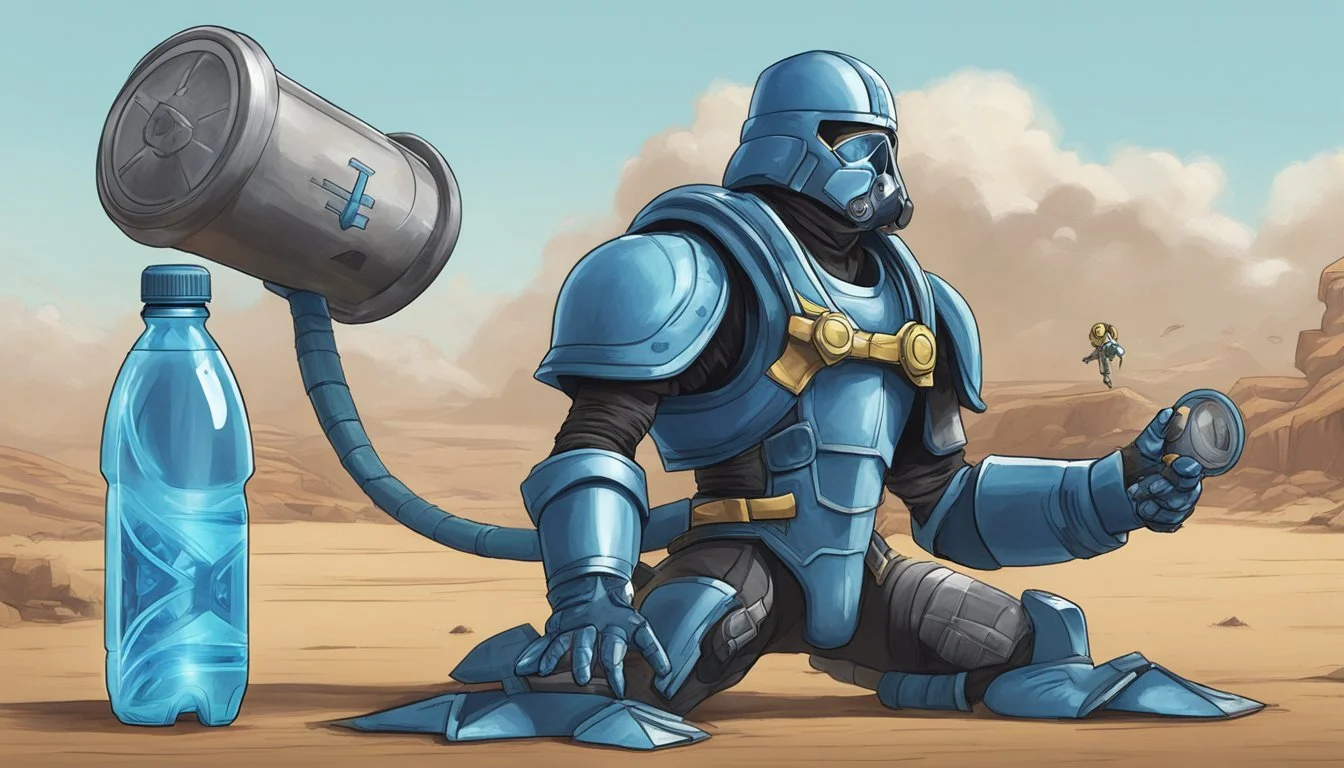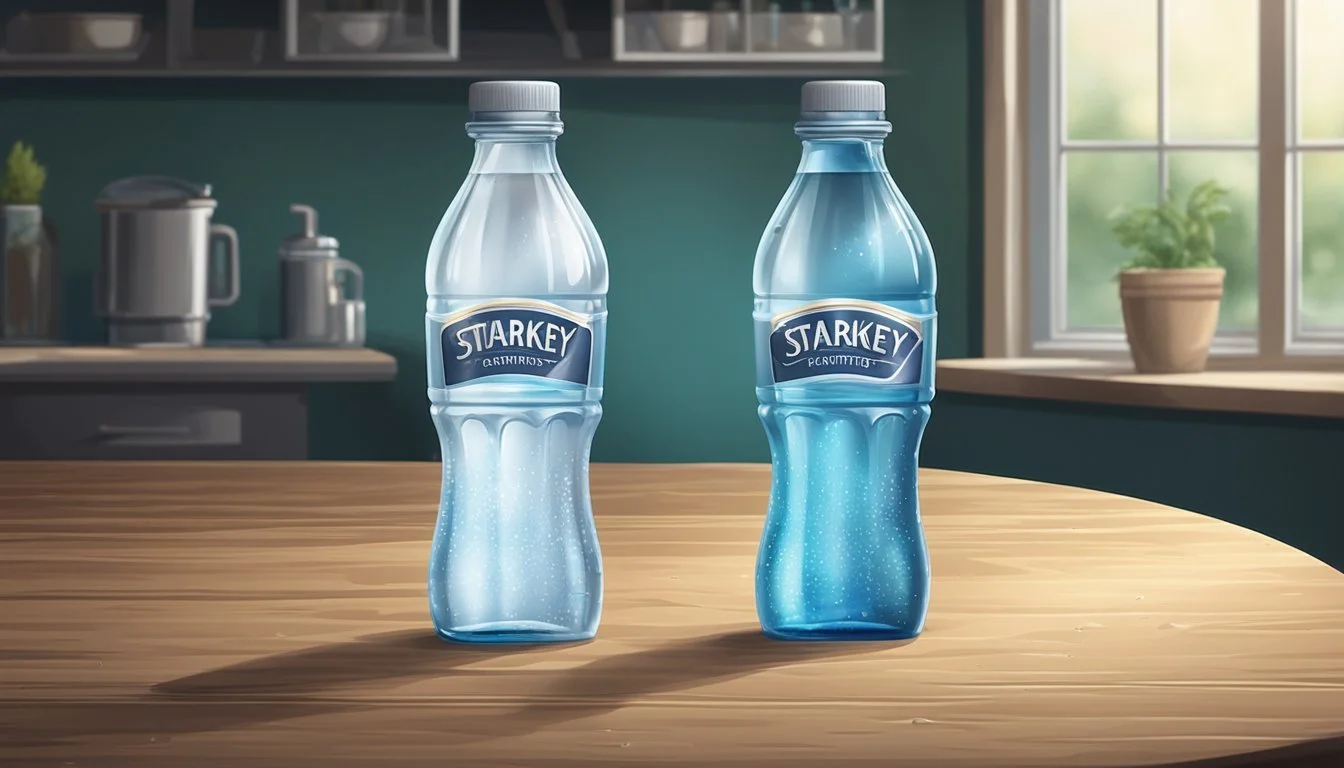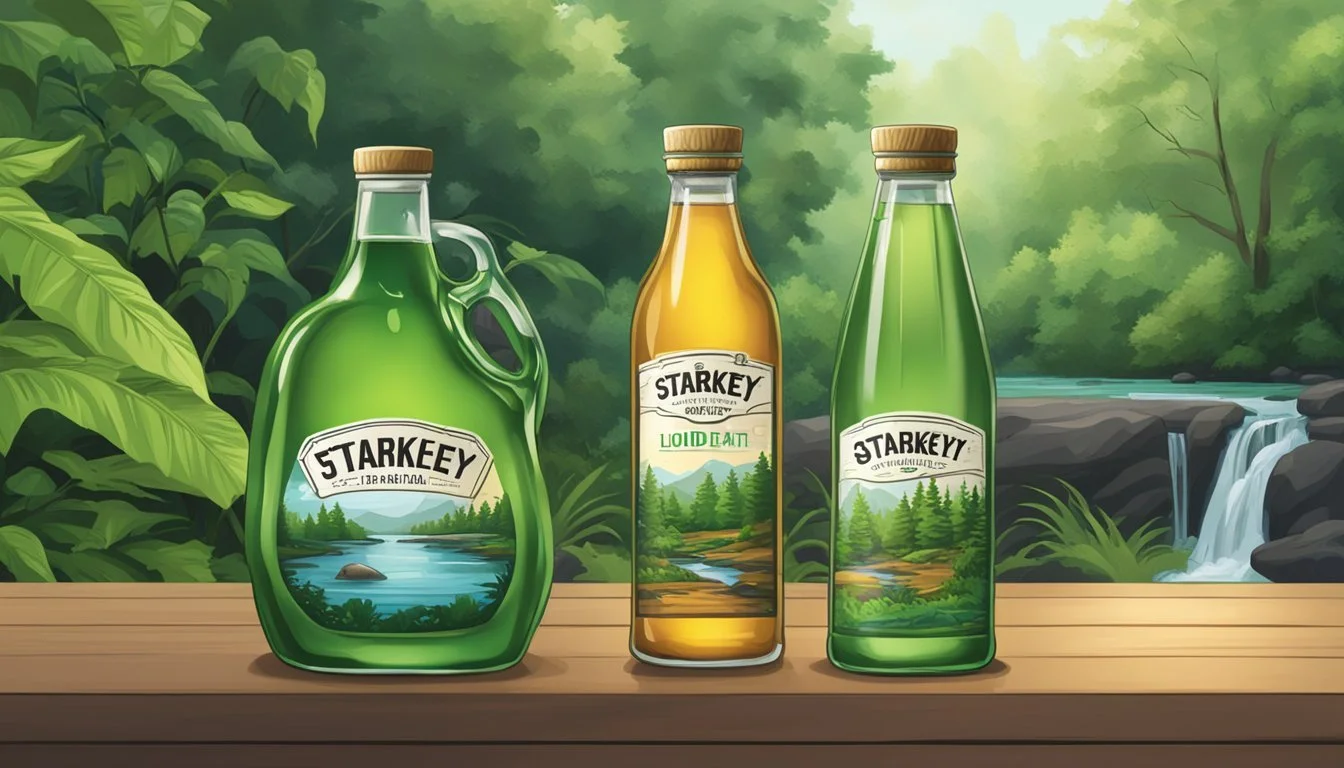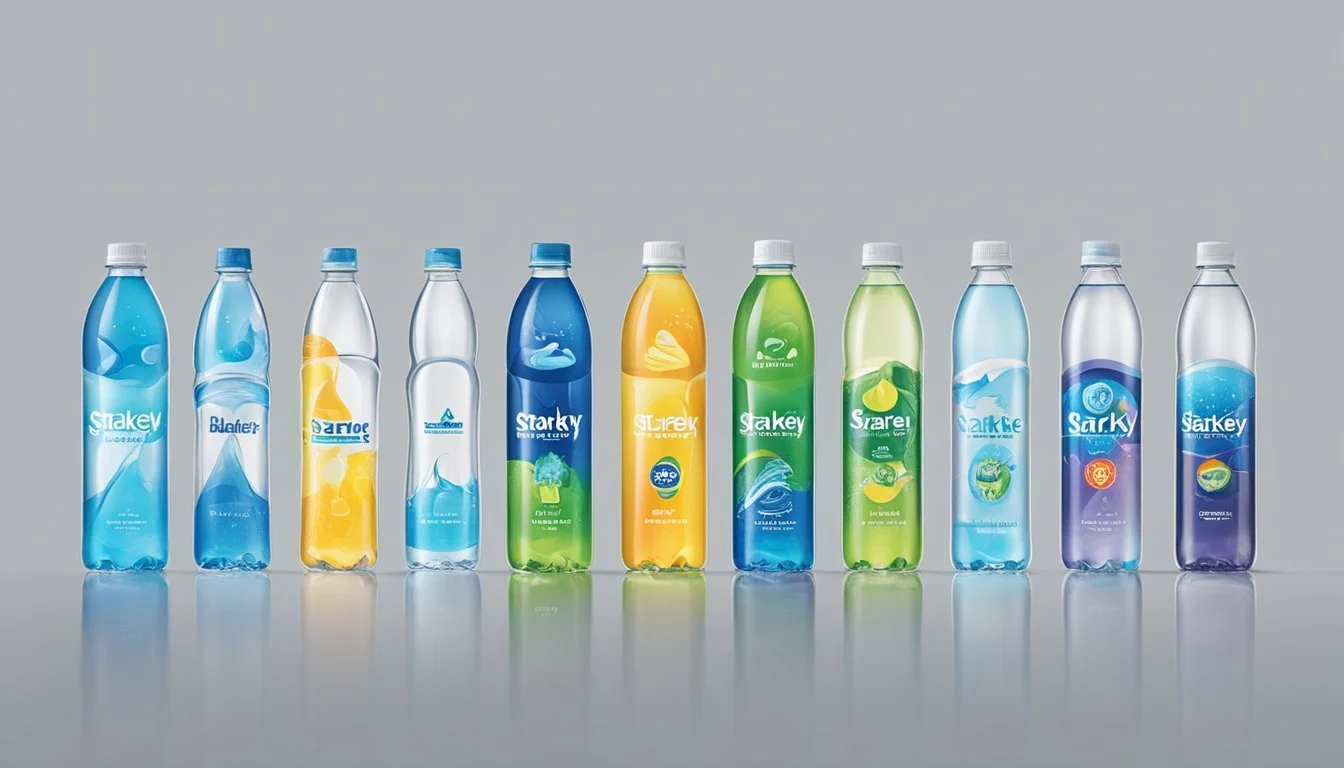Starkey vs. Liquid Death
Comparing Quality and Taste
When it comes to choosing between Starkey and Liquid Death bottled water, several factors can influence your decision. Starkey water, sourced from a geothermal spring, offers a naturally alkaline profile, providing clean and crisp hydration. In contrast, Liquid Death, with its bold marketing, offers both still and sparkling options, packaged in environmentally friendly aluminum cans.
For those prioritizing sustainability, Liquid Death might be the better option due to its aluminum packaging, which is more recyclable than the plastic used by many other brands. On the health front, Starkey's natural mineral content and lack of additives can be appealing to those looking for purity in their hydration choices.
Whether you value the unique taste of naturally sourced water or the eco-friendly packaging, both Starkey and Liquid Death have distinct features that cater to different preferences. Exploring these options will help you decide which bottled water best suits your needs.
Brand Overview
Starkey and Liquid Death offer unique approaches to bottled water, each with distinct histories and marketing philosophies. Understanding each brand's background provides insight into their appeal and market positioning.
Starkey: History and Brand Philosophy
Starkey Water traces its roots to the early 1900s when it was discovered in the Starkey Hot Springs in Idaho. The brand prides itself on its natural source, promoting its high mineral content and geothermal origin.
Starkey positions itself as a premium bottled water option, emphasizing purity and health benefits. Their brand philosophy centers around providing naturally alkaline water. Starkey markets its product to health-conscious consumers who value the water’s natural mineral properties.
Liquid Death: Brand Mission and 'Murder Your Thirst' Campaign
Liquid Death entered the market with a bold and unconventional approach. Founded in 2019, the brand quickly gained attention with its provocative slogan, "Murder Your Thirst."
The company aims to make water cool and appealing, particularly to younger demographics. Their mission is to promote sustainability by packaging water in recyclable aluminum cans. Liquid Death takes a rebellious stance against traditional bottled water marketing, positioning itself as an eco-friendly and edgy choice.
Product Analysis
Liquid Death and Starkey both offer unique attributes in terms of origin, taste, and product variants, making them distinct choices for consumers.
Water Source and Origin
Liquid Death sources its water from the Austrian Alps, which is known for its pristine and mineral-rich mountain springs. Starkey, on the other hand, draws its water from a geothermal spring in Idaho.
Liquid Death's origin in the alpine environment offers a clean and naturally filtered water source. Starkey's geothermal spring provides naturally alkaline water with a higher pH level. Both sources boast unique profiles, catering to different consumer preferences for purity and alkalinity.
Taste Profile and Mineral Content
Liquid Death's water has a slightly mineral-y taste, attributed to its natural filtration through Alpine rocks. In contrast, Starkey offers a more neutral and smooth taste, which some consumers may find more appealing.
Starkey's water contains notable minerals such as calcium, magnesium, and silica, contributing to its taste and health benefits. Liquid Death maintains a balanced mineral composition that imparts a refreshing taste. Both brands ensure their waters are free from contaminants, with monitoring to maintain quality and consistency.
Variants: Sparkling vs. Still Water
Liquid Death offers both sparkling and still water, available in environmentally friendly aluminum cans. The sparkling variant has been praised for its fine bubbles and crisp texture, while the still variant is known for its refreshing and smooth profile.
Starkey primarily focuses on its still water variety, packaged in glass bottles to preserve its purity and alkalinity. The absence of sparkling options may limit choices for those who prefer effervescent beverages, but the dedication to high-quality still water makes it a reliable choice for consumers seeking a smooth drinking experience.
These differences in water source, taste profile, and product variants highlight the unique characteristics that Liquid Death and Starkey bring to the bottled water market.
Packaging Comparison
The packaging of Starkey and Liquid Death significantly differs in terms of materials and design. While both brands prioritize sustainability, they employ distinct approaches that impact their environmental footprint and user experience.
Environmental Impact of Packaging
Liquid Death utilizes aluminum cans for its packaging, a material known for its recyclability. Aluminum requires less energy to recycle compared to plastic and can be recycled indefinitely without loss of quality. Liquid Death’s choice is intentionally geared towards being environmentally friendly, aiming to reduce plastic pollution.
Starkey, on the other hand, traditionally uses plastic bottles for its water. While lightweight and durable, plastic bottles contribute to environmental concerns due to the energy-intensive production process and low recycling rates. Plastic, although recyclable, often ends up in landfills or oceans, causing significant ecological harm.
Convenience and Design
Liquid Death’s aluminum cans provide a unique aesthetic with their edgy design, targeting a demographic that appreciates non-traditional packaging. The cans are lightweight and portable, making them a good option for on-the-go consumers. The punk-inspired branding combined with a practical resealable lid is designed to stand out on the shelves.
Starkey’s plastic bottles offer convenience in terms of portability and weight. They are easy to carry and are often designed with ergonomic grips. Plastic bottles are durable and less prone to breaking compared to glass, making them practical for everyday use, but they fall short in terms of unique design and brand differentiation.
Recycling and Sustainability Initiatives
Liquid Death emphasizes its commitment to sustainability through its use of 100% recyclable aluminum cans. The brand promotes environmental consciousness by highlighting the ease with which aluminum can be recycled and repurposed. Liquid Death's branding often includes calls to action on reducing plastic waste, supporting various eco-friendly campaigns.
Starkey has made efforts to incorporate recycled materials into their plastic bottles and promotes recycling among its consumers. However, the effectiveness of these initiatives is limited by the challenges of plastic recycling and lower consumer recycling rates. Starkey also supports environmental projects but faces a more significant challenge in mitigating the long-term impact of plastic waste.
Health and Nutrition
When comparing Starkey and Liquid Death, it's essential to look closely at their hydration benefits and safety. Key areas of interest include electrolyte content, the presence of contaminants like heavy metals, and adherence to purity standards.
Hydration and Electrolyte Content
Starkey and Liquid Death offer different hydration experiences. Starkey is a natural spring water with a balanced mineral composition. This includes electrolytes like magnesium, calcium, and potassium. These minerals support hydration and overall body function.
Liquid Death, primarily a sparkling water, provides a refreshing taste due to added carbonation. While it hydrates effectively, it typically lacks a rich profile of naturally occurring electrolytes.
For those prioritizing electrolyte intake, Starkey may be more beneficial.
Presence of Contaminants and Heavy Metals
Contaminants and heavy metals in drinking water can pose serious health risks. Starkey has faced scrutiny for containing higher levels of arsenic, though it remains within federal safety limits.
Liquid Death, on the other hand, markets itself as free from harmful substances. It undergoes rigorous testing to ensure it lacks dangerous contaminants like Lead, Nitrate, and PFOAs.
Consumers looking for fewer contaminants might prefer Liquid Death's stringent protocols.
Certifications and Purity Standards
Certifications and purity standards are important benchmarks for bottled water. Starkey is often sourced from protected spring waters and adheres to basic regulatory standards. However, concerns over arsenic levels have led to calls for more stringent monitoring.
Liquid Death is NSF-certified, a mark of high purity and safety. NSF certification indicates compliance with rigorous standards for clean water.
For those prioritizing certified purity, Liquid Death's NSF certification provides additional peace of mind.
In summary, Starkey offers a higher electrolyte content beneficial for hydration but has faced concerns over contaminants. Liquid Death ensures fewer contaminants with strong certifications but provides fewer natural electrolytes.
Consumer Experience
Both Starkey and Liquid Death offer unique experiences for consumers, focusing on different packaging and flavor profiles. Availability in major stores and customer perceptions add layers to their competitive edge.
Tasting Notes and Water Sommelier Reviews
Liquid Death boasts a clean, crisp taste with a slight tang, often preferred for its subtlety. It offers both sparkling and still varieties. Starkey, sourced from deep geothermal springs, has a smooth, velvety mouthfeel favored by water sommeliers. Some find Starkey's mineral-rich profile more luxurious. Both brands aim for purity but achieve distinct flavor experiences.
Market Availability and Purchase Options
Liquid Death is widely available, with sales through Whole Foods, 7-11, Amazon, and the company's website. Starkey can also be found at Whole Foods and select grocery stores. Liquid Death's edgy branding appeals to a younger audience and is sold in aluminum cans, whereas Starkey's premium image matches its glass bottle packaging.
Customer Feedback and Perception
Customers appreciate Liquid Death's bold marketing and environmentally friendly aluminum cans. Reviews highlight its refreshing taste. Starkey's users often cite its premium feel and smooth taste as major selling points. Both brands receive high marks for quality, but Liquid Death's fun and rebellious branding gives it a unique market presence.
Value and Affordability
Both Starkey and Liquid Death have unique pricing strategies, affecting their value and cost-effectiveness for consumers. The differences in their price points and packaging influence their affordability.
Price Comparison
Starkey boasts premium pricing, often due to its sourcing from geothermal springs. A 12-pack of 1-liter bottles can cost around $32, making it a higher-end option. Liquid Death, on the other hand, is known for its more accessible pricing. A similar 12-pack costs approximately $21 for 16.9-ounce cans.
This stark difference highlights Liquid Death's budget-friendly edge. Its aluminum packaging appeals to environmentally-conscious consumers while keeping costs lower. The pricing of Starkey reflects its premium branding and unique source, catering to those willing to pay more for perceived quality.
Cost-Effectiveness for Consumers
Consumers looking for affordability without compromising quality might lean towards Liquid Death. Its reasonable pricing and practical can sizes make it a cost-effective choice for everyday hydration needs. The availability in multipacks further enhances its value proposition.
Starkey, though more expensive, offers a unique selling point with its natural geothermal spring source. For consumers who prioritize unique water sources and the perceived health benefits, Starkey might justify its higher price. However, for most budget-conscious buyers, Liquid Death remains the more practical option.
The decision ultimately hinges on individual preferences and budget constraints, as both products cater to different market segments.
Marketing and Consumer Messaging
Liquid Death and Starkey Water both employ unique marketing strategies and consumer messaging, focusing on distinguished branding and specific market segments.
Advertising Strategies and Target Markets
Liquid Death utilizes bold and unconventional advertising, targeting younger audiences, particularly Gen Z and millennials. Their edgy branding and humorous campaigns emphasize rebellion, attracting those who enjoy counter-culture elements. The use of skull graphics and dark humor helps them stand out in a crowded market.
Starkey Water takes a more subtle approach, focusing on premium quality and health benefits, appealing to a more health-conscious demographic. Their advertising often highlights the purity and mineral content of their spring water, aiming to attract an older, more affluent customer base who prioritize wellness and premium experiences.
Eco-Friendly and Health-Centric Claims
Liquid Death emphasizes sustainability by packaging its water in aluminum cans, which are highly recyclable compared to plastic. Their branding includes bold claims about saving the environment, resonating with eco-conscious consumers who prioritize reducing plastic waste.
Starkey Water also addresses environmental concerns through eco-friendly packaging but places greater emphasis on the health benefits of their product. They highlight the natural mineral content, alkaline properties, and the source from Idaho's aquifer, appealing to consumers who are focused on health and wellness.
Additional Considerations
When evaluating Starkey and Liquid Death, it's essential to explore their innovation and future prospects as well as how they measure up against other bottled water brands.
Innovation and Future Prospects
Liquid Death has pioneered packaging innovation with its use of aluminum cans, touted as eco-friendly due to their recyclability. It appeals to environmentally conscious consumers who prefer alternatives to plastic. This forward-looking approach aligns with growing global concerns over plastic waste.
Starkey focuses on highlighting its natural spring source in Idaho, emphasizing purity and minimal processing. Starkey's strategy revolves around providing a consistently reliable product, leveraging its natural origins to attract health-focused customers.
Liquid Death's branding, with its edgy, rebellious image, sets it apart in the crowded market, targeting younger demographics. Starkey, while more traditional, maintains a steady consumer base prioritizing substance over style.
Comparative Analysis with Other Bottled Water Brands
In the broader bottled water landscape, Liquid Death and Starkey face competition from notable names like Topo Chico, San Pellegrino, and La Croix, which lead in the sparkling water segment. Fiji and Smartwater are dominant in the premium still water market, known for unique mineral compositions and branding.
While Topo Chico and San Pellegrino have long-standing reputations for their sparkling offerings, Liquid Death distinguishes itself with its bold presentation and environmental messaging. Starkey, like Fiji and essentia, markets its water based on purity and source, appealing to consumers seeking high-quality hydration.
Compared to Smartwater, Starkey's emphasis on natural springs contrasts with Smartwater's vapor-distillation process. This differentiation helps Starkey attract a specific niche market concerned with natural and minimal processing.
Both Starkey and Liquid Death have carved out unique spaces in the water market, emphasizing different aspects such as packaging innovation and natural sourcing to appeal to their respective audiences.
Conclusion
When comparing Starkey and Liquid Death, several factors emerge as crucial.
Packaging stands out. Starkey uses glass, while Liquid Death opts for aluminum. Both materials are more eco-friendly than plastic. However, personal preference may play a role in which feels more convenient or stylish.
Taste and variety also matter. Starkey offers still water with a smooth, pure taste. Liquid Death provides still, sparkling, and flavored options. This range might appeal more to those seeking variety.
Price can influence the decision. Starkey tends to be pricier due to its premium positioning. Liquid Death offers competitive pricing, possibly making it more accessible.
The health impact is similar for both. Starkey is known for its clean, naturally sourced water. Liquid Death, despite its edgy branding, offers a product free from harmful additives, especially in the non-flavored versions.
Branding is another notable difference. Starkey markets itself on purity and luxury. Liquid Death employs a rebellious and humorous tone. Preferences here will vary based on individual values and aesthetics.
In terms of availability, both brands are widely distributed, though regional differences might occur. Checking local retailers can provide a more accurate picture.
For those making a choice between Starkey and Liquid Death, considerations should include packaging, taste, price, health, branding, and availability. Each person might prioritize these factors differently, leading to a choice that best fits their lifestyle and preferences.
More About Starkey
Icelandic Glacial vs Starkey: Which Bottled Water is Better?
Mountain Valley Spring Water vs Starkey: Which Bottled Water is Better?
Starkey vs Kirkland Signature: Which Bottled Water is Better?
Starkey vs Richard's Rainwater: Which Bottled Water is Better?
Starkey vs Whole Foods Italian Still Mineral water: Which Bottled Water is Better?
More About Liquid Death
Aqua Carpatica vs Liquid Death: Which Bottled Water is Better?
Core Hydration vs Liquid Death: Which Bottled Water is Better?
Hawaii Volcanic vs Liquid Death: Which Bottled Water is Better?
Hawaiian Springs vs Liquid Death: Which Bottled Water is Better?
Ice Mountain vs Liquid Death: Which Bottled Water is Better?
Icelandic Glacial vs Liquid Death: Which Bottled Water is Better?
Liquid Death vs Cascade Mountain: Which Bottled Water is Better?
Liquid Death vs Crystal Geyser: Which Bottled Water is Better?
Liquid Death vs Crystal Lake: Which Bottled Water is Better?
Liquid Death vs Essence pH10: Which Bottled Water is Better?
Liquid Death vs Kirkland Signature: Which Bottled Water is Better?
Liquid Death vs Proud Source: Which Bottled Water is Better?
Liquid Death vs Richard's Rainwater: Which Bottled Water is Better?
Liquid Death vs Simple Truth: Which Bottled Water is Better?
Liquid Death vs Talking Rain AQA: Which Bottled Water is Better?
Liquid Death vs Whole Foods 365: Which Bottled Water is Better?
Liquid Death vs Whole Foods Italian Still Mineral water: Which Bottled Water is Better?
Mountain Valley Spring Water vs Liquid Death: Which Bottled Water is Better?
Nestle Pure Life vs Liquid Death: Which Bottled Water is Better?
Poland Spring vs Liquid Death: Which Bottled Water is Better?
Purely Sedona vs Liquid Death: Which Bottled Water is Better?
San Pellegrino vs Liquid Death: Which Bottled Water is Better?
Solan de Cabras vs Liquid Death: Which Bottled Water is Better?






